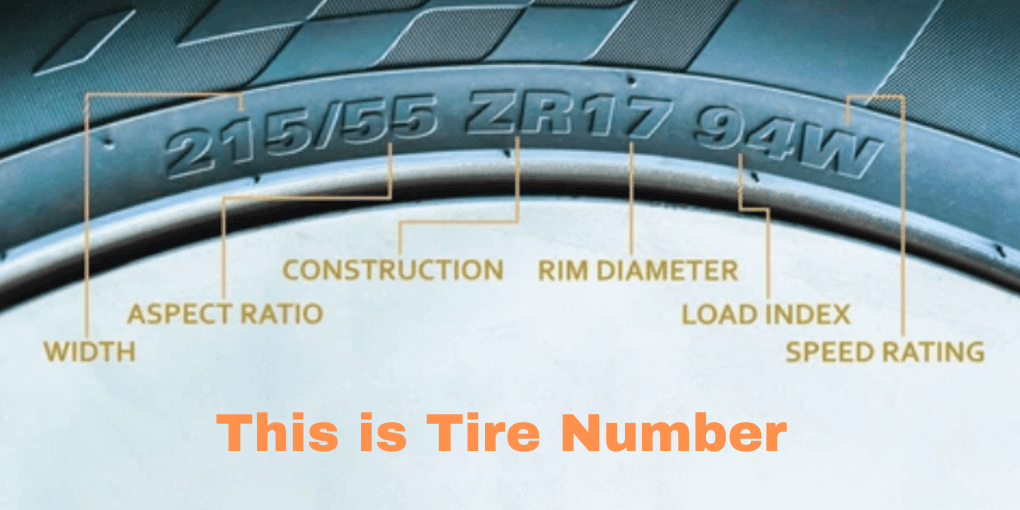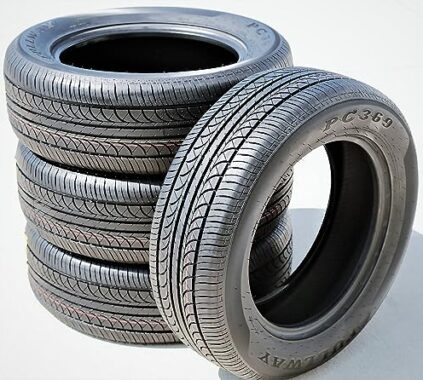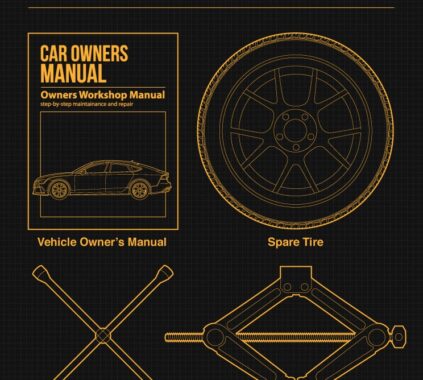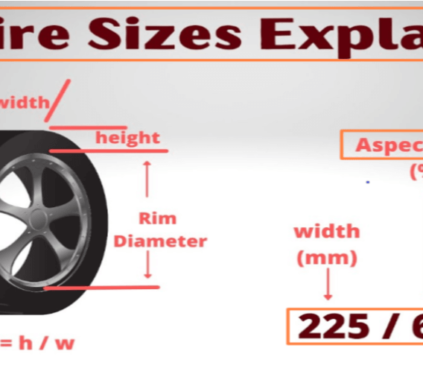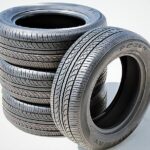The numbers on a tire indicate its size, type, and performance characteristics. These markings provide essential information for selecting the right tire.
Understanding what tire numbers mean is crucial for ensuring vehicle safety, optimizing performance, and maintaining fuel efficiency.
Every vehicle requires specific types of tires, and the cryptic-looking series of letters and numbers on a tire’s sidewall tells you everything about its capabilities.
This information includes dimensions such as tire width, aspect ratio, and diameter, as well as the tire type and its load-carrying capacity and speed rating.
Tires are the only contact point between your vehicle and the road, making their selection and maintenance a matter of utmost importance.
Selecting the correct tires for your vehicle goes beyond just a smooth ride; it also involves adhering to legal safety standards and adapting to climate conditions and driving habits.
Deciphering Tire Number Mysteries
Imagine a secret code written on the side of each tire. It holds clues to a tire’s identity. Understanding tire numbers can seem tough at first. Yet, these numbers tell a story about size, type, and performance. Let’s unlock these mysteries together!
From Numbers To Information
The string of numbers on a tire is like a birth certificate. It shows a tire’s features. This secret code isn’t hard to read once you know how. Let’s turn these numbers into useful information.
- Width: The first number is the tire width in millimeters.
- Aspect Ratio: After the slash, the height as a percentage of the width shows up.
- Construction: A letter like ‘R’ stands for radial, meaning the layers run radially.
- Diameter: Next, the wheel diameter in inches is listed.
- Load Index: This number tells the maximum load the tire can carry.
- Speed Rating: The final letter gives the top speed the tire can handle safely.
The Anatomy Of A Tire’s Code
Each part of the tire code adds to the full picture of a tire’s capacity and suitability. There’s a standard format they all follow. Here’s how to read every piece:
| Code Part | Meaning | Example |
|---|---|---|
| 225 | Tire Width in millimeters | 225mm Wide |
| /65 | Aspect Ratio as a percentage | 65% of width |
| R | Construction Type | Radial |
| 17 | Wheel Diameter in inches | 17″ Wheels |
| 102 | Load Index | Can carry 850kg |
| H | Speed Rating | Up to 210km/h |
Reading tire numbers is easy once you practice. It helps choose the right tires for your car. Always check these numbers when you buy new tires. Safe travels!

Credit: www.myride901.com
Size Matters: Decoding Tire Dimensions
Ever glance at the side of your tires and wonder what all those numbers mean? You’re not alone. This guide breaks down the mystery of tire numbers.
Each number on the tire’s sidewall represents crucial dimensions. Understanding these numbers can impact your car’s performance.
Width
The first number on a tire tells you about its width. This is the measurement from one side of the tire to another.
It’s in millimeters. For example, “225” means the tire is 225 millimeters wide. A wider tire can mean a bigger footprint on the road.
Profile
Next is the profile, also known as aspect ratio. This little number is a percentage. It measures the height of the tire’s sidewall.
It is a percent of the tire’s width. If your tire says “50”, the sidewall height is 50% of the tire’s width. A shorter profile often means sharper steering.
Diameter
The last part of the tire size puzzle is diameter. It tells us the size of the wheel the tire fits. This number is in inches.
If you see “16”, your tire fits a 16-inch wheel. The right diameter makes sure the tire fits and performs properly.
How Aspect Ratio Affects Performance
Aspect ratio plays a big role in handling and ride comfort. A high aspect ratio means a taller sidewall and smoother ride.
A low ratio gives you a rougher ride but better handling. Understanding this helps you choose the best tire for your driving style and comfort.
Load And Speed: Understanding Capability And Safety
Tire numbers aren’t just random figures stamped on the sidewall—they tell a story about your tire’s carrying capacity and how fast it can safely travel.
When you grasp what these numbers mean, you ensure your ride matches the tires’ capability, which is crucial for both your car’s performance and your safety. Let’s break down these numbers into two essential factors: Load and Speed ratings.
Interpreting Load Index
The Load Index on your tire indicates how much weight each tire can safely handle. It’s a numerical code associated with the maximum load a tire can carry at the speed indicated by its Speed Rating, under specified conditions.
| Load Index | Load Capacity (lbs) |
|---|---|
| 91 | 1,356 |
| 95 | 1,521 |
| 100 | 1,764 |
Choosing the right Load Index for your vehicle means checking the owner’s manual or your current tires and matching or exceeding that number to maintain optimal load capacity.
Speed Rating And Its Significance
Next to the Load Index, you’ll find the Speed Rating. This letter symbol reflects the maximum speed a tire can sustain for a certain period under specific conditions.
- S – Up to 112 mph
- T – Up to 118 mph
- V – Up to 149 mph
It’s not about pushing your car to the limits but ensuring your tires won’t fail when you need them most.
Always match or exceed the recommended Speed Rating to ensure optimal safety.

Credit: www.giga-tires.com
Beyond The Basics: Additional Tire Markings
Venturing beyond the basics of tire numbers reveals more about a tire’s story. The sidewall of a tire holds a wealth of information.
It indicates not only size and capacity, but also performance and safety features. Understanding these additional markings is key to making an informed choice for your vehicle.
Understanding Dot Codes
Every tire comes with a unique Department of Transportation (DOT) code. This code provides vital information about the tire’s manufacturing details.
Found on the sidewall, the DOT code usually begins with the letters “DOT” followed by a series of characters. These characters reveal the manufacturing location, the tire size, and the manufacturer’s code.
Additionally, the last four digits denote the week and year the tire was made. For instance, “5217” suggests the tire was produced in the 52nd week of 2017.
Traction, Temperature, And Treadwear Grades
Tires also feature ratings for traction, temperature, and treadwear. These grade markings give insights into the tire’s performance capacity.
- Traction: Indicates how well the tire grips the road in wet conditions. Grades range from AA to C, with AA being the highest grade.
- Temperature: Reflects the tire’s ability to dissipate heat under load. Ranges from A to C, with A indicating the best performance.
- Treadwear: A comparative rating based on the tire’s wear rate. The higher the treadwear number, the longer the tire should last under standard conditions.
For example, a tire with a traction grade of ‘AA’, a temperature grade of ‘A’, and a treadwear of ‘400’ provides excellent wet grip, heat dispersion, and a longer life expectancy. Always refer to these ratings to match your tire choice with driving needs and conditions.
Practical Tips: Using Tire Numbers For Maintenance And Purchase
Understanding tire numbers helps in car care and choosing new tires. These numbers signify tire specs. These specs include size and capacity. Let’s decipher them for better maintenance and smart purchases.
Choosing The Right Tires For Your Vehicle
Choosing tires is crucial for safety and performance. Look for numbers on your tire’s sidewall. These numbers tell you tire’s width, aspect ratio, and diameter. Match tire specs to manufacturer’s recommendations. Here’s a guide:
- Width: Measure in millimeters.
- Aspect Ratio: Height to width percentage.
- Diameter: Wheel size in inches.
Always check your vehicle’s manual or the placard on the driver’s side door jamb. These provide exact tire specifications that fit your vehicle. Following these guides ensures correct fitment and optimum vehicle performance.
Knowing When To Replace Tires
Determining when to replace tires is vital for your safety. Inspect tires regularly for wear and tear. Use these methods:
- Tread Depth: Use a tread depth gauge. Less than 2/32 inches means it’s time to replace.
- Wear Indicator: Look for raised sections in the tread grooves. If they’re flush with the tread pattern, get new tires.
- Age: Check the tire’s four-digit code on the sidewall. The first two digits represent the week, and the last two, the year, of manufacture. Replace tires every 6 years, regardless of tread life.
- Damage: Bulges, cracks, or cuts in the sidewall can mean tire failure. Inspect and replace if needed.
Regular checks and understanding tire numbers extend tire life and ensure your safety on the road.
Keep this knowledge in mind, and you’ll make informed decisions for tire maintenance and when shopping for new ones.

Credit: www.pbs.org
Frequently Asked Questions On What Do Tire Numbers Mean
What Do The 3 Numbers Mean On Tire Size?
The three numbers on tire size denote width in millimeters, aspect ratio, and diameter of the wheel in inches.
The first number represents the tire’s width, the second indicates the sidewall height relative to width (aspect ratio), and the third specifies the diameter of the wheel it fits.
Can I Use 65 Tires Instead Of 55?
Yes, you can use 65 tires instead of 55 if the wheel diameter matches and the new tire size doesn’t interfere with the car’s structure or impair handling. Always consult your vehicle’s manual or a tire professional before switching sizes for optimal safety and performance.
Can I Use 275 Tires Instead Of 265?
Yes, you can use 275 tires instead of 265, but check your vehicle’s clearance and compatibility first to ensure proper fitment without any performance issues.
Can I Use 235 Tires Instead Of 245?
Yes, you can use 235 tires instead of 245, but confirm compatibility with your vehicle’s specifications and consider impact on handling and speedometer accuracy.
Conclusion
Understanding tire numbers is crucial for safe driving and optimal vehicle performance. We’ve unpacked their meaning to help you make informed choices.
Remember, these codes are your guide to size, load capacity, and speed rating, ensuring you pick the perfect fit for your vehicle.
Maintain your tires well for a smoother journey on the road ahead.

Sudatta is a passionate automotive enthusiast and expert in the field. With a keen eye for detail and a love for all things automotive, he shares insightful articles and reviews to ignite the automotive passion in readers.


